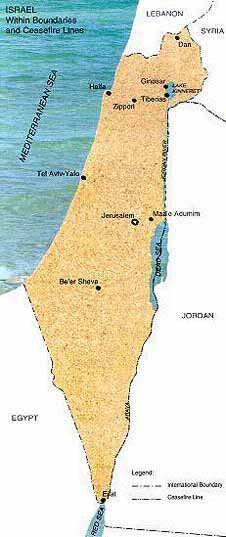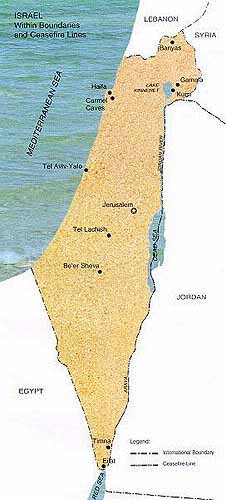Archaeology in Israel: Archaeological Sites in Israel - An Introduction
by Hillel Geva
Archeology provides a valuable link between Israel's past and present. Thousands of sites have been excavated throughout the country, providing an opportunity to study its rich history and shedding light on the culture, society and daily life of its inhabitants throughout the centuries.
Jewish history begins with the patriarchs — Abraham, Isaac and Jacob — some 4,000 years ago. Many finds attest to the long connection of the Jewish people with the Land of Israel and highlight the biblical narrative. Excavations have also revealed remains of other civilizations which have left their imprint on the country.
The archeological sites included here describe discoveries at selected archeological sites, accompanied by historical notes. The sites were chosen for features of interest rather than for scientific importance and are arranged in geographical order from north to south. It is our intention to provide the interested layperson with an insight into the ongoing study of the past that is carried out in Israel, and it is our hope that this will prove an enriching reading experience.
|
Major Archeological Discoveries
The Church of “Mary's Seat”
The remains of a large Byzantine church (5th - 7th century), octagonal in shape and with multicolored mosaic pavement, was discovered near the highway leading from Jerusalem to Bethlehem. A flat rock in the center of the church is believed to be the Kathisma — the seat where the pregnant Mary rested on her way to Bethlehem — mentioned in early Christian sourses.
Beitsaida
A stone stela was exposed at the Iron Age II (9th - 8th century BCE) Beitsaida city gate on the northern shore of the Sea of Galilee. It bears an engraved depiction of a bull-headed warrior armed with a dagger — probably representing the Aramean god Haddad, also known by his biblical name Ba'al, god of rainfall and fertility.
Hatzor
At Tel Hatzor in Galilee, site of the largest Canaanite city in biblical times (Joshua 11:10), a carved basalt orthostat depicting a lion was uncovered. Dated to the Late Bronze Age (15th - 13th century BCE), it was in secondary use in the Israelite level of the upper city. The orthostat weighs about a ton and is perserved in extremely good condition. It was probably one of a pair of lions that once guarded the entrance to the Canaanite royal palace of Hatzor (an identical lion was exposed in the Canaanite temple of the lower city of Hatzor during excavations in the 1950s).
Beit Shean
Two monumental Arabic inscriptions, in square Kufic script, were uncovered on the door jambs of the gate to the city's bazaar, built at the beginning of the 8th century by the Umayyad Caliph Abdallah Hisham. The letters are formed by green glass tesserae covered by gold foil and a thin layer of glass. The inscription reads:
In the name of Allah, Most Gracious,
Ever Merciful. Ordered this
building Abdallah
Hisham, Commander of the Faithful,
[to be built] by the governor Ishaq
son of Qabisa (completed?) the year
[ ] and one hundredJerusalem, City of David
The remains of an impressive structure of the monarchy period, founded on bedrock and built of very large, roughly hewn rectangular stones, was discovered above the Gihon spring in the Kidron Valley. It is believed to be part of the fortifications built at the end of the First Temple period (8th-7th century BCE) by Menassah, King of Judah, to defend the entrance to the Gihon spring: Now after this he built a wall without the City of David on the west side of the Gihon, in the Valley...(2 Chronicles 33:14)
Sources: Israel Information Center, Jerusalem, September 1997 & January 1998
Israeli Foreign Ministry
Hillel Geva studied archeology at the Hebrew University of Jerusalem, participated in excavations in the Jewish Quarter and the Citadel in Jerusalem, and is author of the entry: “Jerusalem” in the New Encyclopedia of Archeological Excavations in the Holy Land and editor of Ancient Jerusalem Revealed




